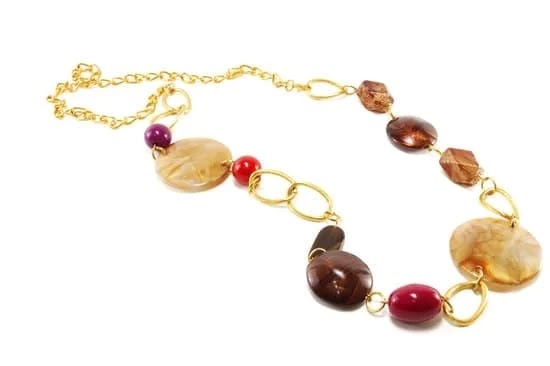Introduction
Surgery can be a stressful and scary experience. From the moment you check in at the hospital, there are various regulations that must be followed to ensure safety. One of the rules almost always enforced is that no jewelry should be worn during surgery. The reasons why this is important may not be immediately clear, but it’s an important aspect of ensuring successful and safe outcomes from surgery.
There are several key reasons why jewelry should not be worn in a surgical environment. Firstly, it can interfere with an electrocardiogram (ECG) machine used for monitoring vital signs during surgery, distorting readings and providing inaccurate data. Secondly, earrings and other items of jewelry can present a risk when equipment such as X-rays are being used as they contain metal which will throw off the quality of the images produced. Thirdly, necklaces chains or loops of any kind create further complications during invasive surgeries by getting caught on medical tools or becoming tangled around the patient’s body during the operation leading to further risks. Finally, metal rings or piercings inadvertently removed during surgery increase the risk of infection in both patients and medical staff involved in the procedure by introducing additional foreign bodies into the operating theater environment.
Overall it is far safer for both patient and surgeon that no item of jewelry is worn during any type of surgery which has been recommended for years for all healthcare organizations and individuals alike over fears surrounding potential health related difficulties associated with external objects within a clinical setting . Such initiatives will reinforce safety regulations across many different types of operations by helping ensure that everyone attending understands what should not be brought into an operating theater environment before their operation begins.
Potential Risk Factors of Leaving Jewelry On During Surgery
Leaving jewelry on during surgery can be risky for both the patient and the medical staff. First, the metal in jewelry may heat up when exposed to X-ray or other forms of radiation. This could lead to burns on the patient if they are exposed to too much radiation during an X-ray procedure or imaging scan.
Moreover, any metal items which are worn by a patient may cause interference with medical equipment or deflect surgical tools away from their intended targets. This could also cause serious injury or even death to the patient. Furthermore, many medical instruments are magnetised so long hairs with metal jewellery can be dragged towards these instruments, leading to an imprecise and dangerous operation. Additionally, some jewelry items (especially necklaces) carry a risk of choking or suffocation whilst the patient is unconscious for surgery and has difficulty breathing due to airways being blocked by tubes. Finally any type of jewelry worn by a patient in theatre can harbour bacteria that can contaminate key areas of surgery leading to infection and create a cross infection risk between surgical teams and patients For these reasons, it is important that all types of jewelry (including watches, rings and earrings) as well as body piercings should be not only removed but kept outside of any operating theatre setting during surgery
Biological Considerations of Jewelry in Surgery
The presence of jewelry during surgery presents many potential risks to both patients and surgeons. Biological materials such as bacteria and viruses can accumulate on jewelry and can be transferred to open surgical sites which can increase the risk of infection. In addition, the presence of personal jewelry in a sterile environment also raises the risk of injury and contamination among other operating room personnel. Jewelry like watches and rings may also cause physical complications due lack of flexibility while covering surgical gloves over fingers with rings, or during surgical scrubbing when objects are removed from sterile areas such as pockets or sleeves. Moreover, these pieces of jewelry may also interfere with imaging techniques used for operations by obscuring an image or blocking movement during an X-ray procedure if worn during radiation. They may even come in contact with the patient’s tissue which could be very dangerous depending on what kind of metal it is made out of. Knowing that certain types of metals are incompatible with other applications, it is best to refrain from wearing any kind of jewelry during surgery altogether, in order to avoid any potential hazards.
jewelry and Heat Sensitivity
Some types of jewelry are particularly prone to high heat sensitivity, such as metal jewelry. Metal jewelry is not allowed in the operating room because it can interfere with certain medical equipment like X-rays and electrocardiograms, which require high levels of concentrated electricity and direct radiation. Additionally, metal jewelry retains heat easily, so it could cause burns if close to the patient during surgery. Other materials such as glass and plastic may also spark or melt when exposed to extreme temperatures or sterilization practices. As a result, these items should also be removed prior to entering the surgical suite. Finally, any type of jewelry (e.g watches and earrings) can pose a contamination hazard due to the small crevices in which bacteria and debris can accumulate. This is why strict protocols must be followed when removing all types of non-sterile accessories before entering an operating room.
Jewelry Affecting Scanner Accuracy
When it comes to medical procedures, patient safety always needs to be considered first and foremost. This is why patients are prohibited from wearing jewelry in the operating room; the presence of metal can lead to decreased accuracy for scanners used in the operating room. Jewelry, such as watches or rings, can create distortions in magnetic resonance imaging (MRI) and other technologies used during surgical procedures that interfere with accurate readings of what is occurring inside a patient’s body. Consequently, it is imperative that jewelry is not worn while undergoing any kind of medical scan or surgery.
In addition to scanning accuracy issues, jewelry also poses other risks during procedures. In the surgical environment, narrow tools and machines must enter the body through small incisions which have little room for error; these tools must be handled delicately and precisely against sensitive tissues. Furthermore, various types of tissues may react unfavorably when coming into contact with certain metals embedded within jewelry–such as nickel– leading to serious skin irritations if a piece of jewelry were to unexpectedly get caught in an open wound on a patient during a procedure. For these reasons it is essential that patients do not wear any type of jewelry when having surgery or undergoing scans.
Why Removing Metal Jewelry Is Necessary Before Surgery
It is essential for people to remove metal jewelry before surgery for a number of reasons. It is a safety precaution for both patients and staff in the operating room. Jewelry can cause unnecessary electric shocks due to potential contact with surgical instruments, which could be potentially devastating to a patient’s health. Additionally, it could cause major complications during the procedure due to its interference with vital medical devices like heart monitors or defibrillators.
Furthermore, wearing jewelry can increase the risk of infection drastically. Due to its nonporous surface, it can act as an ideal structure that shelters harmful bacteria from being sterilized during pre-operative cleaning, thus leading to an increased risk of infection development postoperatively. Lastly, jewelry pieces have a tendency to get caught on things such as sheets or even medical equipment, which can result in unwanted disruptions throughout the surgery and inhibit the surgeon’s ability to complete the operation safely and efficiently.
Protocol for Removing Jewelry During Surgery
Jewelry is prohibited in the operating theater not only to reduce the risk of contamination, but also to prevent potential patient injury or foreign body aspiration. Before any surgical procedure, all personnel involved (doctor, nurse, assistant) must remove any jewelry including rings, necklaces, bracelets and earrings before entering the theater. Hair accessories should also be removed if possible.
In addition to existing protocol for removing jewelry during surgery, there are additional considerations that must be taken into account to ensure patient safety. For example, piercings should not just be removed prior to entering the theater; medical staff should also cover any exposed piercing openings with a dressing or other secure covering to prevent particles from entering wound sites during surgery. Watches and other electronic items (phones/smartwatches) should also be avoided in order to minimize the risk of electric shock or interference with medical equipment. All instruments and equipment used during an operation must be sterilized before use in order to prevent infection and cross-contamination between patients; this includes using sterile covers on any jewelry which cannot be removed prior to the start of surgery.
Patient Education
One of the most common questions surgeons hear from prospective patients is, why can’t I wear jewelry into surgery? The answer is simple: for safety reasons. Jewelry can be hazardous to patients and doctors during surgery because it can harbor bacteria that can cause infection. In addition, metal ornaments like earrings, necklaces, and watches contain conductors like copper and silver, which can interfere with certain medical equipment and give off electric shocks when they come into contact with other metals in the operating room like instruments and machines. Additionally, some jewelry contains precious stones or gems that could become lodged in a patient’s throat if they were inadvertently swallowed during a procedure. All of these risks outweigh any benefits jewelry may offer. For these reasons, it is recommended that you remove all items of jewelry before your scheduled surgery. This includes wedding rings, watches, body piercings and medical alert bracelets—anything that isn’t secured to your body should be removed prior to undergoing anesthesia or a surgical procedure. If metal objects must remain on you during surgery due to religious restrictions or any other reason – such as permanent tattoos – your healthcare provider will discuss safe alternatives with you before beginning treatment.
Summary
Jewelry, including rings, watches and any other type of jewelry item, should be avoided during surgery as it can create a number of potential hazards. Jewelry has the potential to become impropery sanitized before going into a surgery room and could carry bacteria onto the surgical site. There is also a risk that jewelry may catch on medical equipment or even become detached and enter the patient’s body unintentionally. Additionally, jewelry worn during surgery can lead to increased onset of skin irritation or a rash due to strong disinfectants and soaps used in strict hygiene protocols inside operating rooms. It is important for patients to understand that wearing no jewelry during their surgery is essential for preventing health risks and complications.

Welcome to my jewelry blog! My name is Sarah and I am the owner of this blog.
I love making jewelry and sharing my creations with others.
So whether you’re someone who loves wearing jewelry yourself or simply enjoys learning about it, be sure to check out my blog for insightful posts on everything related to this exciting topic!





